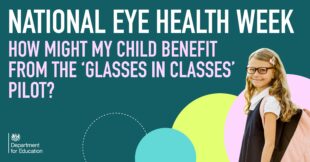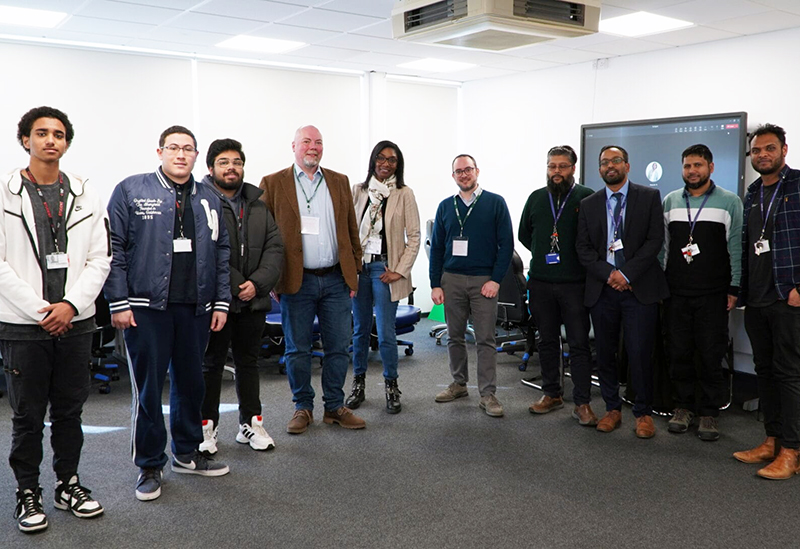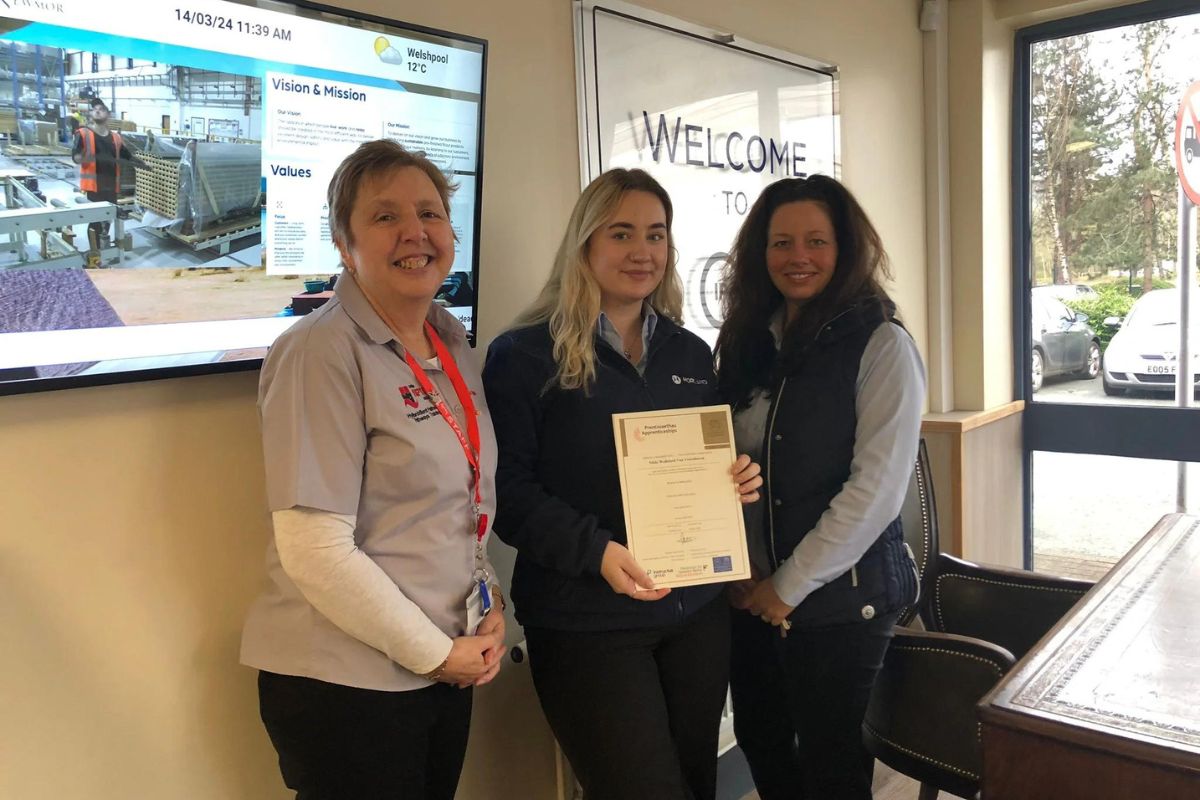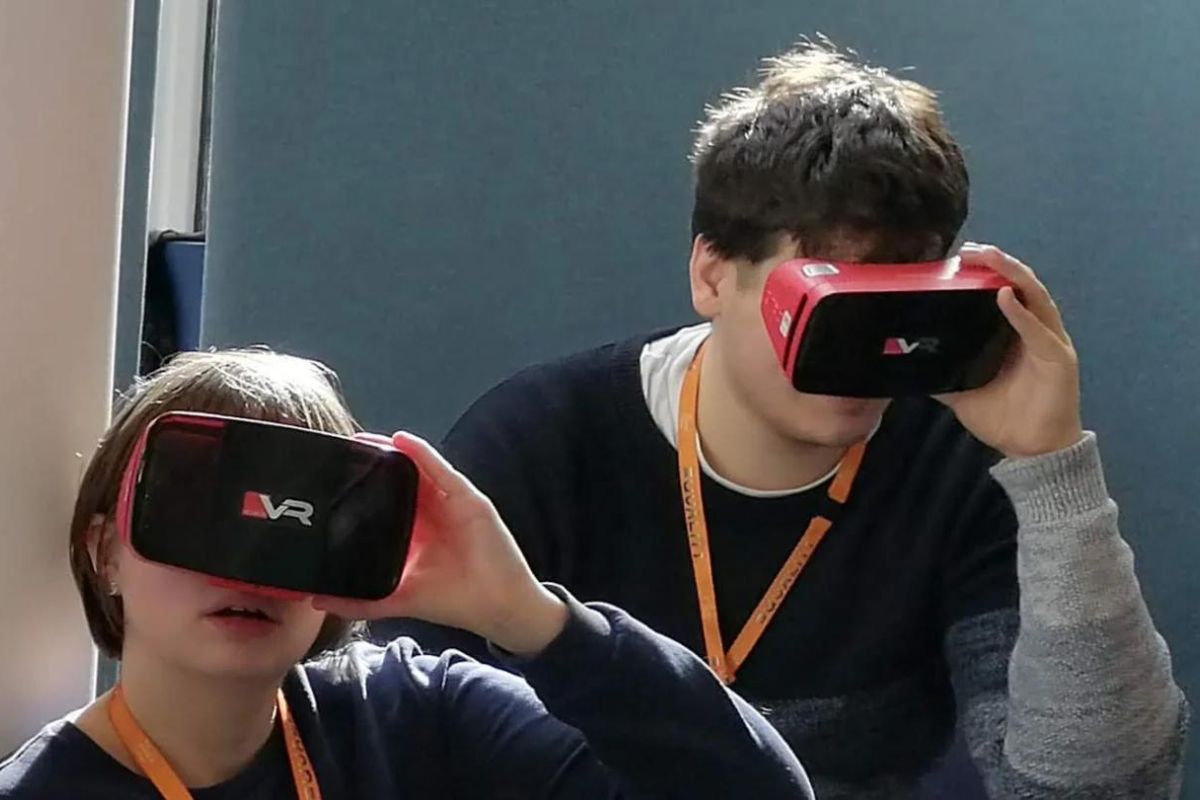‘Glasses in Classes’ scheme aims to level up outcomes and will be adapted for five disadvantaged areas in England

Thousands of pupils will benefit from an expanded programme that provides two free pairs of glasses to improve reading and writing by tackling poor eyesight.
Data shows that 30 per cent of pupils who need glasses have not been to an optician*, alongside disadvantaged children being less likely to get, or wear, the glasses they need. This can hold children back.
The ‘Glasses in Classes’ scheme aims to level up outcomes and will be adapted for five disadvantaged areas in England, under the Opportunity Area programme. This will reach more than 9,000 pupils in at least 225 schools.
Children identified as needing glasses will receive one pair for home and one for school, helping them concentrate in the classroom and improve their literacy skills.
 Education Secretary Nadhim Zahawi said:
Education Secretary Nadhim Zahawi said:
“As a young boy shortly after arriving in this country, I sat at the back of the classroom with poor language skills and low confidence, struggling to engage with my lessons.
“Back then, I could never have dreamt of the opportunities this country would give me and I am determined to help every young person overcome obstacles, just as I was supported.
“Too many children still struggle with the literacy skills they need to make the most of their education. Simple steps like providing free glasses to those that need them so they can clearly see words on a page, for example, can help close the literacy gap and foster a love of learning.”
Children and their families will receive support from a vision co-ordinator, usually a teaching assistant, to attend follow-up eye examinations, get their prescription glasses and wear them regularly. Training will be available for support staff.
Marking National Eye Health Week (20 to 26 September), the scheme is backed by Opportunity Area funding and will now be available for pupils in Doncaster, Derby, Durham, Norwich and Breckland, and the North Yorkshire Coast.
The ‘Glasses in Classes’ project was developed by the Centre for Applied Education Research (CAER), a partnership created by Bradford Opportunity Area to remove health barriers to learning.
It was expanded across the city in 2019 using Education Endowment Foundation (EEF) funding to include 100 primary schools, of which half received the intervention, to further investigate the effect on literacy attainment of providing additional glasses for use in school.
This latest expansion aims to support other areas facing similar challenges and to close the attainment gap that persists between some children and their more affluent peers, despite it narrowing at every stage of education since 2011 up until the pandemic.
It builds on the Government’s ambitious, long-term education recovery plan, including investment of more than £3 billion to date, and the extension of the Opportunity Area programme to a fifth year.
Schools do not usually get the results of vision screenings that pupils take in reception class but, during the pilot, these results were shared with staff in schools so they knew which pupils and families to support. Children are already entitled to free NHS sight tests and vouchers to help with the cost of glasses, but this trial gives them two pairs for free.
At the start of the Opportunity Area programme in 2017, pupils in Bradford were 6.2 percentage points behind the national average in reading at Key Stage 2. That gap narrowed almost a third to 4.6 percentage points in 2018 and halved to 3.1 percentage points in 2019.
Other studies have shown that vision improved for children who wear their glasses compared to those who do not and there is a link between poor eyesight and reduced literacy scores*.
Local partners will work together to adapt the ‘Glasses in Classes’ approach to meet local need in the five areas as part of the Opportunity Area’s place-based approach to levelling up.
There are 12 Opportunity Areas sharing £108 million funding over five years to level up outcomes and raise standards for young people in disadvantaged places (see link). It has been successful in delivering interventions from early years through to employment, with a focus in years four and five on spreading its benefits by ‘twinning’ with other places, working with colleagues across government and through a series of ‘insight guides’ that showcase some of the projects in all 12 areas.
‘Glasses in Classes’ features in the Opportunity Area’s health and education insight guide showcasing a selection of interventions covering mental health and wellbeing and early identification of autism (see link).
Bradford Opportunity Area (link) established the Centre for Applied Education Research (CAER) to address barriers to learning that exist outside the school gates. Health and education experts deliver innovative research which ties together data-led insights and policy interventions to remove health barriers to learning. It launched ‘Glasses in Classes’ in 2018 (link) and the pilot was expanded with funding from the Education Endowment Foundation (EEF) in 2019 (link).
The CAER partnership includes the Department for Education, Bradford Teaching Hospital NHS Trust, the Universities of Leeds, Bradford and York, the City of Bradford Metropolitan Council, and the Educational Endowment Foundation (EEF).
- *Bruce, A., Kelly, B., Chambers, B., Barrett, B. T., Bloj, M., Bradbury, J., & Sheldon, T. A. (2018a). The effect of adherence to spectacle wear on early developing literacy: a longitudinal study based in a large multiethnic city, Bradford, UK. (link)
- NHS sight tests are free for a large proportion of the population, including children, people aged 60 and over and those on income related benefits. Optical vouchers are also available for eligible groups, including children, to help with the cost of glasses.
- The UK National Screening Committee recommends that vision screening should be offered to all children aged four to five years. Local authorities have responsibility for commissioning vision screening which usually takes place in schools. Public Health England has developed a range of guidance on vision screening with stakeholders to assist commissioners (link).
National Eye Health Week: How might my child benefit from the ‘Glasses in Classes’ pilot?
Good eyesight in children can have a huge effect on literacy and academic attainment. If a child cannot see the board properly or read their book it can affect their progress at school. Reading is key to unlocking the rest of the curriculum for children and we know those who struggle to read will struggle in all subjects not just English. Even more significantly, research shows that children from disadvantaged backgrounds who read habitually for pleasure can overcome their circumstances and even outperform more affluent pupils.
That is why during National Eye Health Week this month (21-27th September) the department is extending its ‘Glasses in Classes’ initiative. Here’s what you need to know about the programme and what it means for your child.
What is ‘Glasses in Classes’?
‘Glasses in Classes’ is a trial which tests the impact of providing an additional free pair of glasses to pupils who need them in class.
It was launched in 2018 in Bradford after figures showed that 30% of pupils who need glasses haven’t been to an optician to get them and disadvantaged children are more likely to not get or wear them.
Schools were given the results of the vision screening tests their pupils take in reception class so they knew who to support.
Children are already entitled to free NHS sight tests and vouchers to help with the cost of glasses. The Bradford trial provided a second pair to be kept in school and a trained vision co-ordinator, usually a teaching assistant, worked with the child, family and teacher to provide the support needed and make sure they wear them in class.
Pupils at Grove House Primary School in Bradford are now feeling more confident in class and enjoy reading more after receiving free glasses through our Glasses in Classes scheme.
We’re extending it to help even more children in some of the most deprived areas across England. pic.twitter.com/2yXxPxOBNv
— Department for Education (@educationgovuk) September 23, 2021
How is the scheme being extended?
The trial is being extended to five new regions in a bid to help narrow the attainment gap in literacy. Pupils in Derby, Doncaster, Durham, Norwich and Breckland, and the North Yorkshire Coast will benefit from extending this project. Children in these areas will receive two pairs of glasses, one for home and one for school, and staff will be trained to ensure they are wearing them in class to help level up literacy outcomes for children.
The expansion marks National Eye Health Week (20 to 26 September) which is also a reminder of the importance of regular eye tests and good eye health for everyone. Catching problems early with children’s vision will help improve their life chances and prevent more intrusive health interventions in the long term.
What else is the department doing to ensure all children can read and write fluently?
We have strengthened the national curriculum and since 2013 explicitly required schools to teach reading using systematic phonics. The Phonics Screening Check introduced in 2012 ensures every six-year-old is on track in learning to read providing indisputable evidence phonics works: in 2019, 82 per cent of pupils in Year 1 met the expected standard in the Phonics Screening Check, compared with just 58 per cent when the check was introduced in 2012. For disadvantaged pupils, this figure rose from 45 per cent to 71 per cent.
A new Reading Framework highlights the most effective ways schools have taught children to read and cultivate a life-long love of reading. To support schools further, in 2018 we also launched our £43 million English Hubs programme, comprising 34 primary schools that are outstanding at teaching reading. To date, the programme has helped more than 5,000 other primary schools in England deliver excellent phonics teaching.
How can I find out more about ‘Glasses in Classes’ and what’s happening in my area?
There’s more information about ‘Glasses in Classes’ in this health and education guide, also featuring other projects funded by the department’s Opportunity Area programme, so we can share what we’ve learnt to help even more young people fulfil their potential.
NHS sight tests are free for a large proportion of the population, including children, people aged 60 and over and those on income related benefits. Optical vouchers are also available for eligible groups, including children, to help with the cost of glasses.
The UK National Screening Committee recommends vision screening for four to five-year-olds and local authorities are responsible for this as part of the healthy child programme. There’s more information about vision screening with advice and resources from Public Health England to help those providing high quality local screening services.












Responses